Are you trying to grow cucumbers this summer but have noticed that the leaves of your plants are turning yellow? Yellowing cucumber leaves can be caused by a number of issues, ranging from improper planting practices and high soil temperatures to nutrient deficiencies or pests. In this blog post, we’ll explore what may be causing your cucumber plant’s condition, as well as provide practical solutions for stopping/minimizing the damage. Read on to get a better understanding of why cucumber leaves turn yellow and how you can restore their healthy color!
Causes of Cucumber Leaves Turning Yellow
Many factors can cause cucumber leaves to turn yellow.

These include insufficient water, disease or pests, nutrient deficiencies, too much nitrogen fertilizer, and extreme temperatures.
- Insufficient Water – When cucumbers are not receiving enough water, the leaves will start to turn yellow as a sign of stress. If this is the case, make sure your cucumber plants have access to at least 1-2 inches of water per week.
- Disease/Pests – Diseases and pests can cause yellowing of the leaves in cucumbers. Make sure to inspect your plants regularly for signs of pests or diseases like powdery mildew or downy mildew. If present, treat them with an appropriate fungicide.
- Nutrient Deficiencies – Cucumbers need certain nutrients, such as nitrogen, phosphorus, and potassium to stay healthy. If a nutrient deficiency is the cause of yellowing leaves in cucumbers, applying the necessary fertilizer can help restore their health. [1]
- Too Much Nitrogen Fertilizer – Applying too much nitrogen fertilizer can result in rapid vegetative growth at the expense of fruit production. As a result, cucumber leaves may turn yellow due to excessive nitrogen levels. To avoid this problem, only use enough fertilizer for your plants’ needs and not more than that.
- Extreme Temperatures – Extreme temperatures can also lead to yellowing of cucumber leaves. Make sure your plants are getting adequate protection from the hot summer sun and cold winter temperatures.
How to Prevent/Minimize Yellowing Leaves
Planting & Soil Temperature Considerations
The temperature of your soil is an important factor when it comes to preventing yellowing leaves. It’s best to plant cucumbers in well-drained soil with a pH between 6.0 and 7.0. During the summer months, be sure to keep your soil at a consistent 65-75°F (18-24°C). Overly hot or cold soils can cause stress that will lead to yellowing leaves.
Watering Practices & Fertilization Needs
Ensuring proper hydration is also key to preventing yellowing leaves in cucumbers. During the growing season, water your cucumbers regularly and deeply with 1-2 inches (2.5-5 cm.) of water per week. Providing your cucumber plants with a balanced fertilizer can help too—apply a 10-10-10 blend three weeks after planting and then every 4-6 weeks following that.
Mulching & Pruning Tactics
Using organic mulch around your cucumber plants will help keep moisture levels consistent and minimize yellowing leaves as well. Aim for 3 inches (7.6 cm) of organic mulch, such as straw or grass clippings, around each plant to keep soil temperatures even and steady.
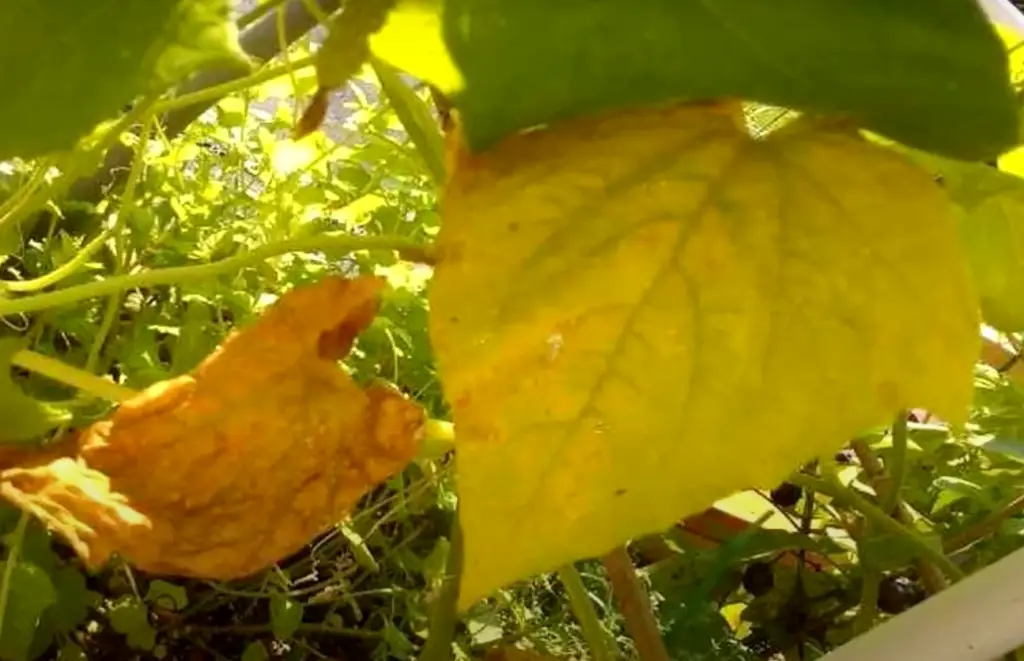
Pruning your cucumber plants back as needed can also reduce yellowing leaves, as it helps the plant to focus its energy on producing healthy fruits rather than excess foliage.
Pest Control Strategies
Lastly, managing pests will help keep yellowing leaves to a minimum. Pests such as aphids, cucumber beetles, and squash bugs can stress your plant and prevent it from producing healthy foliage. If you spot any of these pests on your cucumbers, use an insecticidal soap or neem oil spray to control them. Additionally, keeping the area around your plants free of weeds will also lessen the chances of pest infestations. [2]
Tips for Reviving Yellow Cucumber Leaves
- Water the cucumber plant properly to ensure it has enough moisture for healthy growth. Make sure soil is moist but not soggy, and water deeply at least once a week to keep the roots adequately hydrated.
- Improve soil fertility by adding organic matter such as compost or aged manure to help provide necessary nutrients for the cucumbers’ growth needs.
- Ensure that your cucumber plants are receiving adequate sunlight each day for at least six hours per day in order to stimulate foliage growth and photosynthesis.
- Prune away any dead leaves or stems from around the cucumber vines in order to improve air circulation and light penetration which helps strengthen overall plant health.
- Examine the leaves for signs of aphid or fungal infestations and treat accordingly with an organic method such as neem oil.
- Add mulch around the cucumber vines to help keep soil temperatures even and conserve moisture in order to ensure healthy growth and development of your cucumber plants.
- Inspect the plant regularly for pests that can cause yellowing of cucumber leaves such as spider mites, aphids, whiteflies, or leafhoppers, and take appropriate action if any are found.
- Make sure the cucumber plants are not overcrowded or competing for resources, as this can cause yellowing of leaves.
- Fertilize the cucumber plants with a balanced liquid fertilizer every two weeks throughout the growing season for optimal health.
- Be sure to provide adequate support for your cucumber plants, as letting them sprawl out on the ground can cause yellowing of leaves due to lack of light.
- By following these tips and taking good care of your cucumber plants, you should be able to revive their yellow leaves and give them a fighting chance for a successful harvest! [3]
Do Cucumbers Like A Lot Of Water?
Yes, cucumbers need plenty of water to keep their leaves green and healthy. The soil should be kept consistently moist, but not wet or soggy. In particularly hot weather, cucumbers may need to be watered daily or even twice a day to prevent their leaves from wilting.
Overwatering can also lead to yellow leaves, so it’s important to make sure the soil isn’t too saturated. If you’re unsure if your cucumber plants need water, check the soil with your finger; if it feels dry and crumbly an inch below the surface, then it needs watering. Additionally, mulching around cucumber plants can help retain moisture in the soil and prevent rapid evaporation on sunny days.

If you suspect overwatering is the cause of yellow leaves, reduce watering frequency and make sure that the soil has plenty of drainage. If your cucumber plants are still displaying yellow leaves despite adequate water, it could be caused by nutrient deficiency or disease. In that case, consider applying a liquid fertilizer specifically designed for vegetables to the plants’ root systems. Keeping your cucumber plants in an area with plenty of sunlight will also help them stay healthy!
In summary, remember that cucumbers need plenty of water to keep their leaves green and healthy. Make sure the soil isn’t too saturated and mulch around the plants to help retain moisture in dry weather. Monitor your plants closely and apply a liquid fertilizer if necessary. Finally, provide your cucumber plants with plenty of sunlight, and they should stay healthy and strong!
How To Fertilize Cucumbers?
Fertilizing your cucumber plants can help to prevent and mitigate yellow leaves. Plants need nutrients such as nitrogen, phosphorus, and potassium in order to remain healthy and produce abundant fruits.
Be sure to follow the instructions on the package for proper application rates. Improperly fertilizing your cucumbers may result in nutrient burn which can further exacerbate yellowing leaves. Additionally, you should always water thoroughly after applying fertilizer to avoid chemical burns.Aside from using commercial fertilizer, you can also consider using natural fertilizers such as compost, manure, and bone meal. These organic fertilizers not only provide essential nutrients to the plant but also help to improve soil structure and enhance microbial activity in the soil. This is especially beneficial for cucumber plants since they have shallow roots. Applying a 2-3 inch thick layer of organic mulch around your cucumber plants can also help to conserve moisture and protect their delicate leaves from sunburns. [4]
Can You Save An Overwatered Cucumber Plant?
Yes, you can save an overwatered cucumber plant. The first step is to check the soil’s moisture content. If the soil feels soggy or muddy, there may be too much water causing the leaves to turn yellow.
Additionally, it’s important to adjust the amount of light that your cucumber plants are receiving as some varieties require less light than others. You can also consider adding a layer of mulch around the base of each plant to help retain moisture in the soil while preventing it from becoming overly saturated.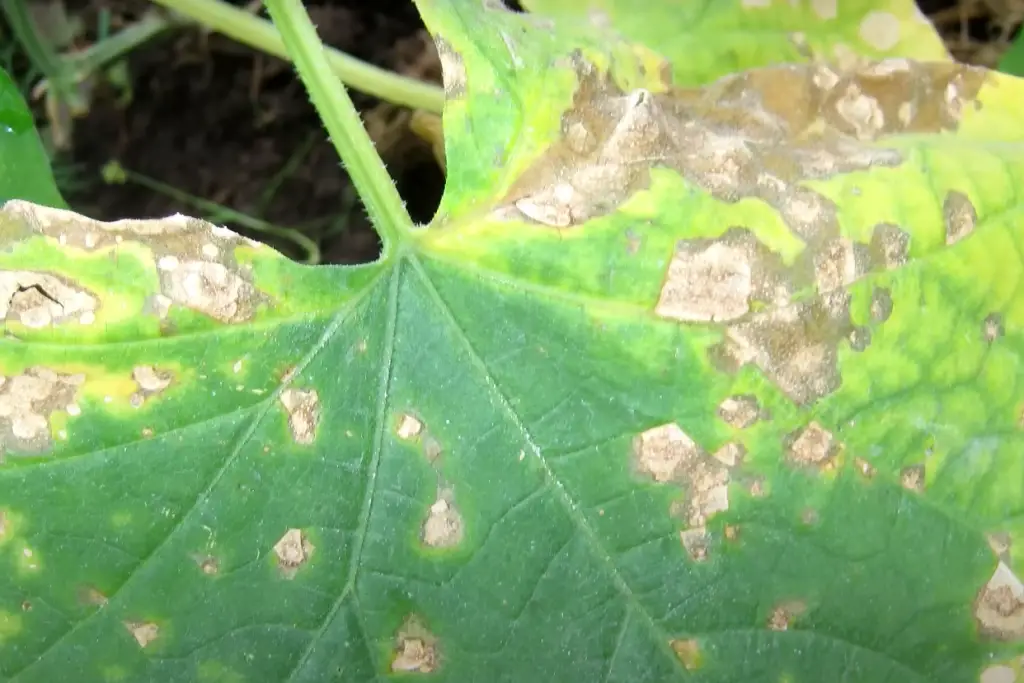
Finally, make sure that you’re using well-draining soil for your cucumbers – this will allow excess moisture to escape instead of pooling around the roots and causing root rot. If you continue to experience yellow leaves, it may be necessary to repot the cucumber plant into fresh soil that is better suited for its needs. Doing so can help provide your cucumber plants with a healthier environment for continued growth and success. [5]
Can You Leave Cucumbers In Water Overnight?
It’s not recommended to leave cucumbers in water overnight. This can cause them to become soft and mushy, which will affect their taste and texture. If you do choose to leave the cucumbers in water overnight, make sure that the water is cold—not warm or hot—to reduce the risk of them becoming too soft. You should also change the water regularly to keep it as fresh as possible and prevent bacteria from forming on the cucumber surface. Additionally, be sure to check for any spoilage before consuming cucumbers that have been left in water overnight, as they may lose their flavor or develop a slimy texture due to bacterial growth.
Ultimately, it’s best to use fresh cucumbers when possible so that you can enjoy their full flavor and texture. If you need to store cucumbers for an extended period of time, place them in a plastic bag in the crisper drawer of your refrigerator. This will help prevent excessive moisture loss and keep them fresh for up to two weeks. Additionally, don’t forget to inspect all cucumbers before eating or cooking with them, as any discoloration or softness may indicate spoilage that could make you ill if consumed. With these simple steps, you can ensure that your cucumber leaves remain healthy and vibrant for longer!
Are Eggshells Good For Cucumbers?
Eggshells can be beneficial to cucumbers in two ways: as a source of calcium and in the form of mulch. Calcium is an important nutrient for healthy plant growth, and eggshells are a natural source of calcium that can be used to supplement soil. Eggshells also make great mulch for cucumbers, helping retain moisture in the soil and reducing weeds. To use eggshells as fertilizer or mulch, simply crush them up into small pieces and scatter around your plants. If you want to get more out of your eggshells, you can boil them before crushing them so that they break down faster when put into the soil. Eggshells are an easy and effective way to give your cucumber plants some extra love and keep them healthy.
Are Coffee Grounds Good Fertilizer For Cucumbers?
Coffee grounds can be an excellent fertilizer for cucumbers, as they are rich in nitrogen.
Coffee grounds also contain small amounts of other minerals that are beneficial to cucumber plants, such as potassium, calcium, magnesium, and phosphorus. To use coffee grounds as a fertilizer, mix them with water at a ratio of 1 part coffee grounds to 3 parts water.Once the mixture is ready, apply it directly to the soil around your cucumber plant. Be careful not to over-apply though–too much coffee ground fertilizer could cause damage to your plant’s roots or lead to nutrient toxicity. Additionally, it’s important to note that coffee grounds can be acidic, so if your soil is already quite acidic, you should avoid using them as a fertilizer. If in doubt, have your soil tested before adding any coffee ground fertilizers. [6]
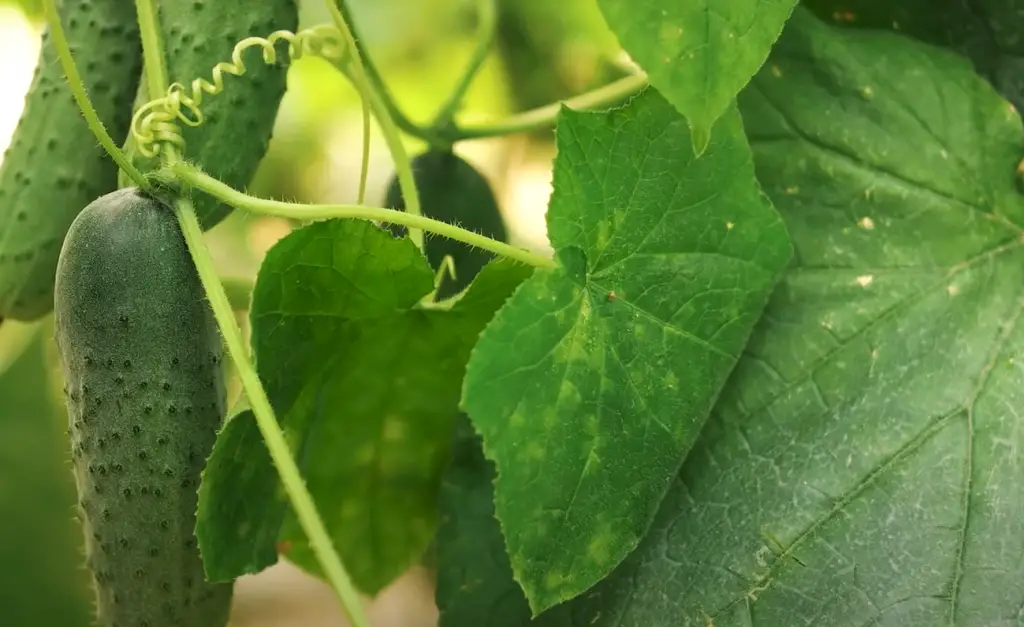
Overall, used in the correct amounts and at the right times of year, coffee grounds can be an effective fertilizer for cucumbers and help prevent yellowing of leaves due to nutrient deficiency. However, it’s important to take into account your soil conditions before adding them to ensure you don’t cause harm to your plants. By following these guidelines you can enjoy healthier and better-looking cucumber plants throughout the growing season!
FAQ
How do you fix yellow cucumber leaves?
The best way to fix yellow cucumber leaves is to identify and address the underlying cause. This could include correcting nutrient deficiencies, improving soil drainage, or amending the soil with compost or other organic matter. Additionally, you should check for pests or disease and take appropriate measures such as pruning affected leaves or applying insecticides/fungicides as needed. If environmental conditions are favorable but still lead to yellowing of cucumber leaves, it may be necessary to switch varieties of cucumbers that are better adapted to your climate or soil type. Finally, ensure the plants have adequate water in order to promote healthy growth.
Why are my cucumber leaves turning yellow?
Cucumber leaves can turn yellow due to a variety of factors. This could include nutrient deficiencies, poor soil drainage, too much sun or heat, pests or disease, or a lack of water. It is important to diagnose the underlying cause in order to address it properly.
Should I cut the yellow leaves off the cucumber plant?
It depends on the severity of the yellowing. If only a few leaves are affected, it is best to leave them and allow the plant time to recover. Pruning off infected leaves may help reduce spread but could also end up stressing the plant even more. If there is extensive yellowing throughout all or most of the plant, then pruning off the affected leaves can be beneficial as it reduces competition for nutrients and water between healthy and unhealthy foliage. However, if you do decide to prune away damaged foliage make sure you sterilize your tools in between cuts with rubbing alcohol or another disinfectant solution to prevent transferring disease from one leaf to another. Additionally, removing any mulch near or around the base of the cucumber plant will help to reduce the risk of disease spreading. If you suspect disease or pests are the cause of your cucumber leaves turning yellow, it’s important to treat as quickly as possible.
What is the best natural fertilizer for cucumbers?
The best natural fertilizer for cucumbers is compost. Compost is rich in nutrients, including nitrogen, phosphorus and potassium that cucumbers need to thrive.
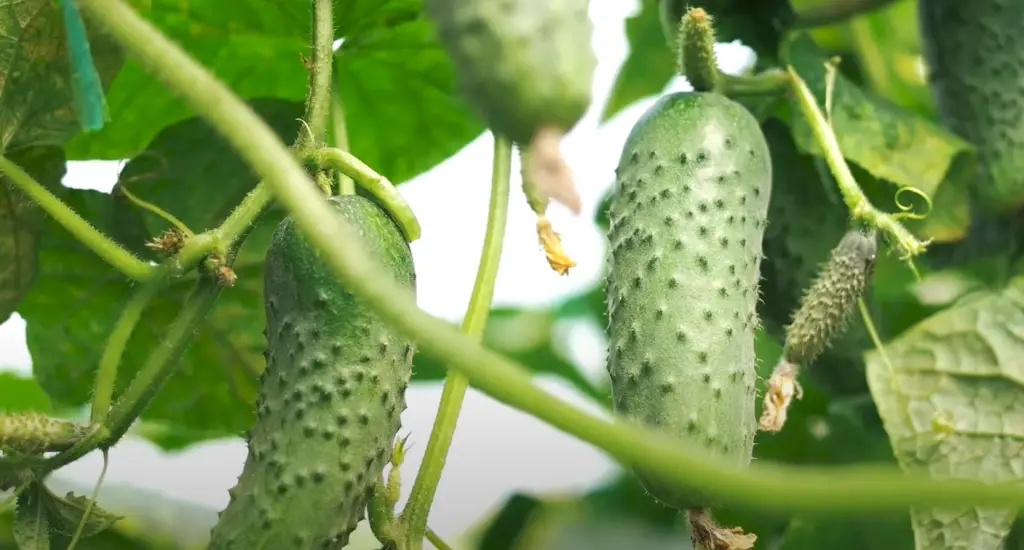
Compost also helps improve soil structure and drainage, promoting healthy root growth. Adding plenty of organic matter such as leaves, grass clippings or sawdust to the soil can help boost nutrient levels and promote strong plant growth. Supplementing with a small amount of balanced liquid fertilizer may be necessary during times of rapid growth or heavy fruiting. Finally, if your area experiences periods of drought, mulching the soil around the base of the plants can help minimize water loss from evaporation and keep your cucumber vines growing strong.
How do you make cucumbers grow better?
Cucumbers are relatively easy to grow and can thrive in a wide variety of environments. To help cucumber plants become healthy and productive, it’s important to provide them with the proper care and attention. Here are some tips for ensuring good growth:
- Provide Adequate Sunlight – Cucumbers require full sunlight for at least 6-8 hours per day in order to flourish. If your plants don’t have access to direct sun, you may supplement their light requirements with artificial lighting.
- Maintain Proper Temperature – Cucumbers do best when daytime temperatures range from 70-90 degrees Fahrenheit (21-32 degrees Celsius). Nighttime temperatures should not drop below 60°F (15°C).
- Water Regularly – Cucumbers need to be kept consistently moist in order to grow well. Water regularly, being sure not to overwater, as this can lead to root rot and other problems.
- Fertilize – Cucumbers respond positively to fertilization, so supplementing their soil with a balanced fertilizer will help them reach their full growth potential.
- Mulch – To keep moisture in and weeds out, mulching around cucumber plants is a good idea. Organic mulches such as straw or shredded leaves are best.
- Prune & Train – If your cucumber vines become too long or unwieldy, pruning them back can help encourage more productive and healthy growth. Additionally, training cucumber vines along a trellis or stake can make them easier to manage and keep fruit off the ground. By following these tips, you can give your cucumbers the best chance for success! With proper care, they should be well on their way to providing you with delicious fruits in no time.
Useful Video:THE LEAVES ON CUCUMBERS ARE YELLOWING URGENTLY TAKE ACTION OTHERWISE THERE WILL BE NO HARVEST
Conclusion
Yellowing cucumber leaves can be caused by a variety of factors, including nutrient deficiencies, pests or diseases, and environmental stress. To reduce the risk of yellowing leaves, it is important to monitor your cucumber plants carefully and take preventative measures. If you do notice yellowing leaves, there are a few steps you can take to try to address the issue before it gets worse. Pruning affected leaves and branches, ensuring adequate moisture levels in the soil, using fertilizer if necessary, controlling pests as needed, and adjusting environmental conditions as needed may help restore your cucumber plant back to health. With proper care and attention your cucumbers should remain healthy throughout their growing season.
Good luck! 🙂
References:
- https://savvygardening.com/yellow-cucumber/
- https://www.gardenerbasics.com/blog/cucumber-leaves-turning-yellow
- https://www.homesandgardens.com/gardens/why-are-my-cucumber-leaves-turning-yellow
- https://www.greenmatters.com/p/why-cucumber-leaves-turning-yellow
- https://harpersnurseries.com/guide-on-why-your-cucumber-leaves-are-turning-yellow/
- https://www.homesteadingwhereyouare.com/2022/07/15/cucumber-leaves-turning-yellow/





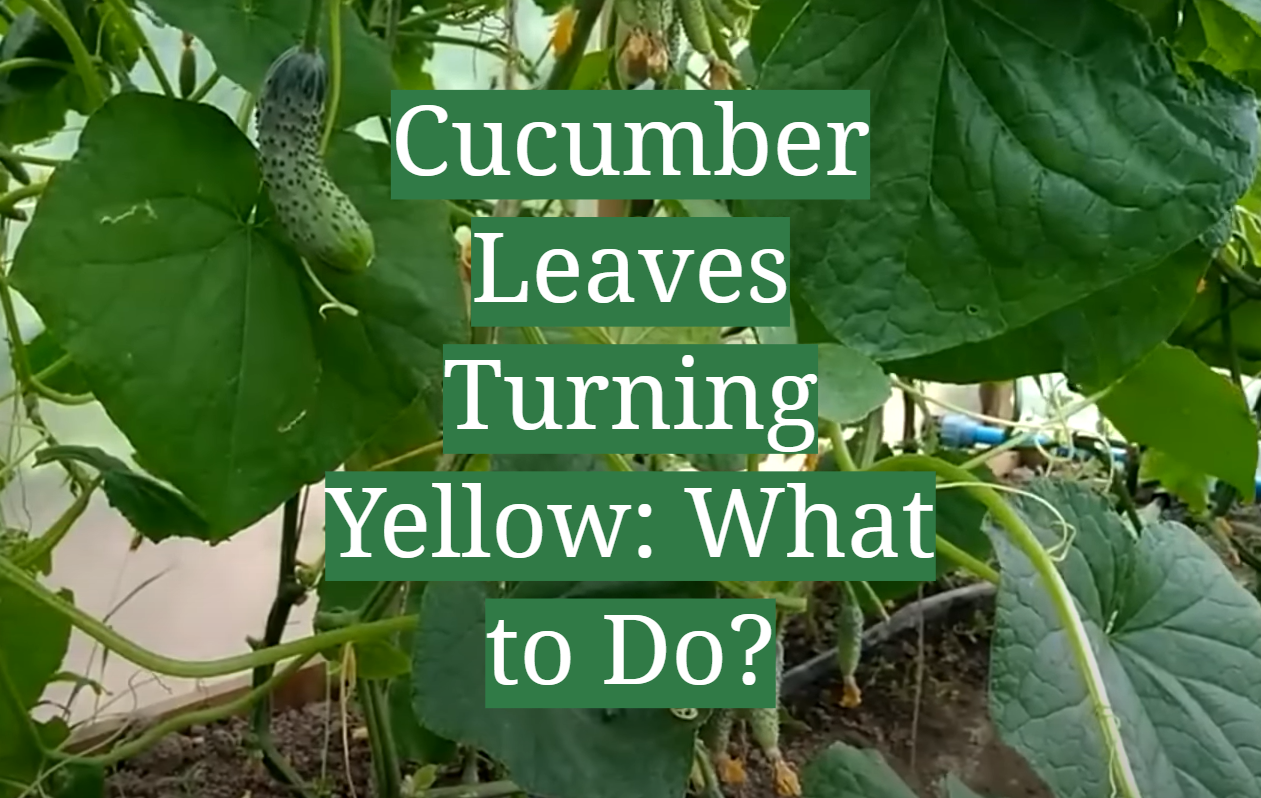




Leave a Reply
View Comments